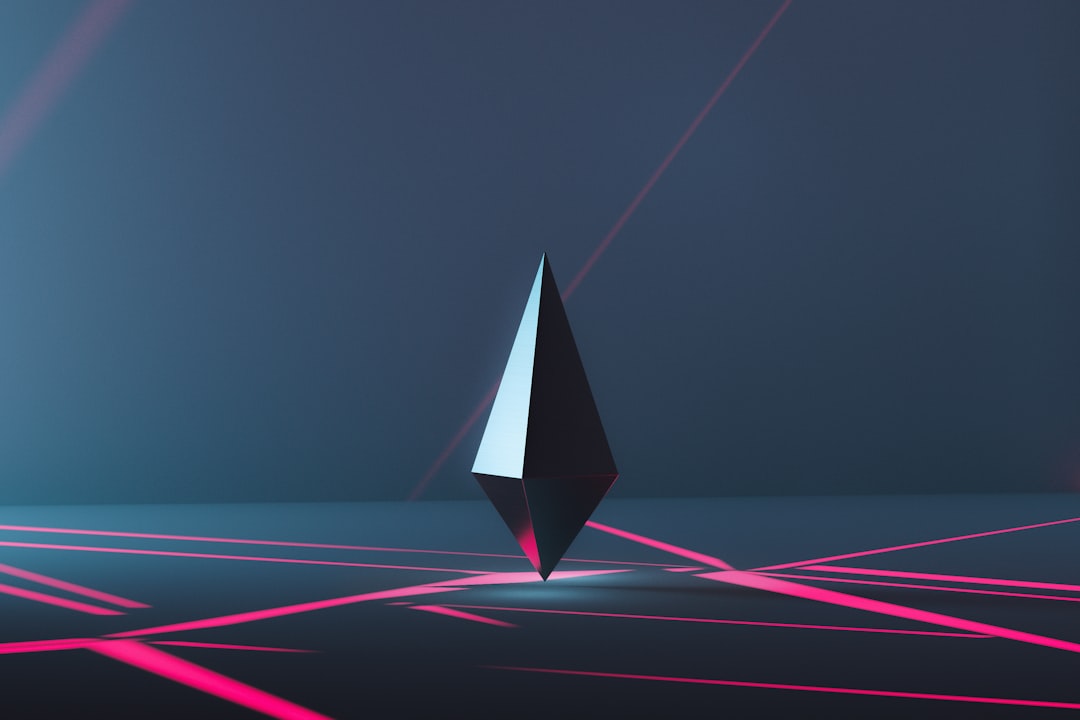Non-fungible tokens, or NFTs, have taken the digital world by storm in recent years, sparking both excitement and confusion among artists, collectors, investors, and tech enthusiasts alike. But what exactly are NFTs, and why are they suddenly so popular? Let’s dive into the fascinating world of NFTs and explore their rise to prominence.
NFTs are unique digital assets that represent ownership or proof of authenticity of a particular item or piece of content. Unlike cryptocurrencies such as Bitcoin or Ethereum, which are interchangeable and have the same value, NFTs are one-of-a-kind and cannot be replicated. This distinctiveness is what makes NFTs so valuable and sought after in the digital marketplace.
Created using blockchain technology, NFTs are stored on a decentralized ledger, ensuring transparency and security in transactions. Artists, musicians, gamers, and other creators have embraced NFTs as a new way to monetize their work and connect with fans in a direct and innovative manner.
As NFTs continue to garner attention and push boundaries in the digital space, it’s essential to understand the ins and outs of this emerging technology and its potential impact on various industries. Let’s explore the world of NFTs together and uncover the opportunities and challenges they present in today’s ever-evolving digital landscape.
What are NFTs?
Non-fungible tokens, or NFTs, have been making headlines lately as a hot new trend in the digital world. But what exactly are NFTs? Simply put, NFTs are unique digital assets that represent ownership of a specific item or piece of content. Unlike cryptocurrencies such as Bitcoin or Ethereum, which are fungible and interchangeable, NFTs are one-of-a-kind and cannot be replicated or exchanged for another token of equal value.
So, how are NFTs created and exchanged? NFTs are typically created on blockchain platforms, which provide a secure and transparent ledger for recording ownership and transactions. Artists, musicians, and other creators can mint NFTs by tokenizing their work, essentially turning it into a digital collectible that can be bought, sold, and traded on various online marketplaces.
When it comes to exchanging NFTs, the process is similar to buying and selling physical collectibles or artwork. Buyers can browse NFT marketplaces to discover and purchase tokens that catch their eye, while sellers can list their NFTs for sale and set their desired price. Once a transaction is made, the ownership of the NFT is transferred to the buyer, recorded on the blockchain for all to see.
Overall, the creation and exchange of NFTs have opened up new possibilities for artists and creators to monetize their work in the digital realm, while also providing collectors and enthusiasts with a new way to own and appreciate unique pieces of art and culture.
Unlike cryptocurrencies such as Bitcoin or Ethereum, which are fungible and interchangeable, NFTs are one-of-a-kind and cannot be replicated or exchanged for another token of equal value.
Why are NFTs valuable?
Non-fungible tokens, or NFTs, have garnered significant attention in recent years due to their unique features that set them apart from traditional digital assets. One of the key reasons why NFTs are valuable is their ability to represent ownership and authenticity in the digital world in a way that was previously impossible.
Unlike cryptocurrencies like Bitcoin or Ethereum, which are fungible and can be exchanged on a one-to-one basis, NFTs are one-of-a-kind assets that cannot be replicated or exchanged for an equal value. This scarcity is a major factor in determining the value of NFTs, as collectors and investors are willing to pay a premium for something that is truly unique.
Examples of valuable NFTs in the art world include digital artworks by renowned artists such as Beeple, whose piece “Everydays: The First 5000 Days” sold for a record-breaking $69 million at auction. In the gaming industry, NFTs have also gained popularity as players can purchase and trade in-game items, skins, and characters as unique digital assets.
Furthermore, the ability to attach metadata to NFTs, such as provenance, ownership history, and artist information, adds an extra layer of value and authenticity to these digital assets. This transparency and traceability make NFTs a desirable option for creators, collectors, and investors looking to secure their digital ownership rights.
Overall, the value of NFTs lies in their ability to revolutionize the way we perceive and interact with digital assets, opening up new possibilities for artists, creators, and collectors to monetize and showcase their work in the ever-evolving digital landscape.
Furthermore, the ability to attach metadata to NFTs, such as provenance, ownership history, and artist information, adds an extra layer of value and authenticity to these digital assets.
How to buy and sell NFTs
So, you’re ready to dive into the world of non-fungible tokens (NFTs) and explore the exciting opportunities they offer. Buying and selling NFTs can be a thrilling and potentially lucrative experience, but it’s essential to understand the platforms and risks involved in this emerging market.
When it comes to purchasing and selling NFTs, there are several platforms that cater to different audiences and preferences. Some of the most popular platforms include OpenSea, Rarible, and Foundation, each offering a unique user experience and selection of digital assets. These platforms act as marketplaces where creators can mint and list their NFTs for sale, while buyers can browse and purchase these one-of-a-kind tokens.
Before diving headfirst into the world of NFTs, it’s crucial to consider the risks and considerations involved in investing in these digital assets. One of the primary risks of buying NFTs is the volatility of the market, with prices fluctuating rapidly based on demand and trends. Additionally, NFTs are vulnerable to market speculation and hype, leading to inflated prices for certain assets.
Furthermore, there are concerns surrounding the potential for scams and fraudulent activities in the NFT space, as the digital nature of these assets can make them susceptible to theft and manipulation. It’s essential to conduct thorough research and due diligence before making any purchases or sales to ensure that you are engaging with reputable creators and platforms.
Despite the risks involved, investing in NFTs can be a rewarding and exciting endeavor for those looking to explore the intersection of art, technology, and finance. By navigating the market with caution and an open mind, you can participate in this innovative space and potentially discover valuable and meaningful digital assets that resonate with you.
Despite the risks involved, investing in NFTs can be a rewarding and exciting endeavor for those looking to explore the intersection of art, technology, and finance.
NFTs and Digital Ownership
One of the most intriguing aspects of NFTs is their impact on digital ownership rights. In the traditional digital world, ownership of a digital asset is often murky and easily replicable. However, with the introduction of NFTs, individuals can now prove ownership of a unique digital item. This has significant implications for artists, creators, and consumers alike.
For artists, NFTs provide a means to establish true ownership of their work in the digital realm. By minting their creations as NFTs, artists can ensure that each piece is one-of-a-kind and cannot be duplicated without their consent. This newfound sense of ownership not only gives artists more control over their work but also opens up new revenue streams through the sale of digital collectibles.
Similarly, for consumers, NFTs offer a way to truly own digital assets in a tangible way. Whether it’s a piece of digital art, a virtual item in a game, or a tokenized real-world asset, owning an NFT means having a unique digital token that represents your ownership. This concept of digital ownership is revolutionizing how we perceive and interact with digital goods, blurring the lines between physical and digital ownership.
Moreover, the potential for NFTs to revolutionize the art and entertainment industries is vast. With NFTs, artists can bypass traditional gatekeepers and directly connect with their audience, offering digital assets for sale in a transparent and secure manner. This democratization of the creative process has the power to reshape the art world, empowering artists to monetize their work in new and innovative ways.
Overall, the rise of NFTs and their impact on digital ownership is a fascinating development in the digital space. As we continue to explore the possibilities of this technology, we are witnessing a shift towards a more secure, transparent, and inclusive digital economy. The potential for NFTs to transform how we create, consume, and own digital assets is truly exciting, and we can’t wait to see where this journey takes us.
In the traditional digital world, ownership of a digital asset is often murky and easily replicable.
Criticisms and controversies surrounding NFTs
As with any emerging technology or trend, NFTs have faced their fair share of criticisms and controversies. One of the most prominent concerns is the environmental impact of NFTs. The process of creating and trading non-fungible tokens involves complex algorithms and heavy energy consumption, leading to a significant carbon footprint. This has raised valid questions about the sustainability of NFTs and their long-term implications on our planet.
Another hotly debated issue is the potential for copyright infringement and ownership disputes within the NFT space. While NFTs are designed to provide proof of ownership for digital assets, there have been instances where artists’ work has been minted as NFTs without their consent. This has sparked debates about the need for better regulation and protection of intellectual property rights in the digital realm.
Despite these criticisms, it’s important to approach the discussion with an open mind and a willingness to address these challenges. By acknowledging the concerns surrounding NFTs, we can work towards finding solutions that benefit both creators and consumers. It’s a learning process for everyone involved, and as the technology continues to evolve, we have the opportunity to shape the future of NFTs in a way that is ethical and sustainable.
It’s a learning process for everyone involved, and as the technology continues to evolve, we have the opportunity to shape the future of NFTs in a way that is ethical and sustainable.
Conclusion
In conclusion, the world of NFTs is a fascinating and rapidly evolving space that has captured the attention of artists, collectors, investors, and tech enthusiasts alike. As we have explored throughout this blog post, non-fungible tokens are unique digital assets that are revolutionizing the way we think about ownership and value in the digital age.
From digital art to virtual real estate to in-game items, NFTs offer a new way for creators to monetize their work and for collectors to own exclusive pieces of digital content. The concept of scarcity and provenance embedded in NFTs adds a layer of authenticity and value that traditional digital assets lack.
Looking ahead, the future of NFTs in the digital market is incredibly promising. As more industries adopt blockchain technology and explore the potential of non-fungible tokens, we can expect to see even greater innovation and disruption in the way we create, consume, and value digital content.
While there are certainly criticisms and controversies surrounding NFTs, such as environmental concerns and issues with copyright, it is important to approach this new technology with an open mind and a willingness to learn and adapt. By staying informed and engaging in thoughtful discussions about the implications of NFTs, we can navigate the challenges and opportunities that lie ahead.
In the end, NFTs represent a new frontier in the digital landscape, offering endless possibilities for creators, collectors, and investors. Whether you are a seasoned art collector or a curious newcomer, now is the time to explore the world of non-fungible tokens and see where this exciting technology will take us in the years to come.





